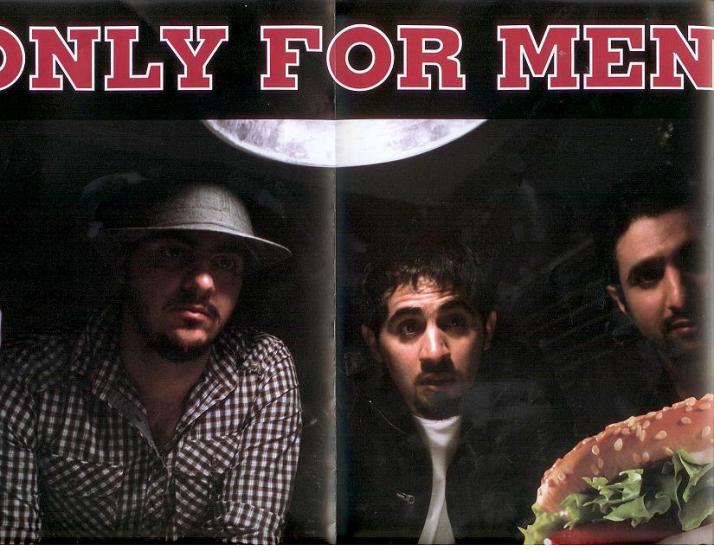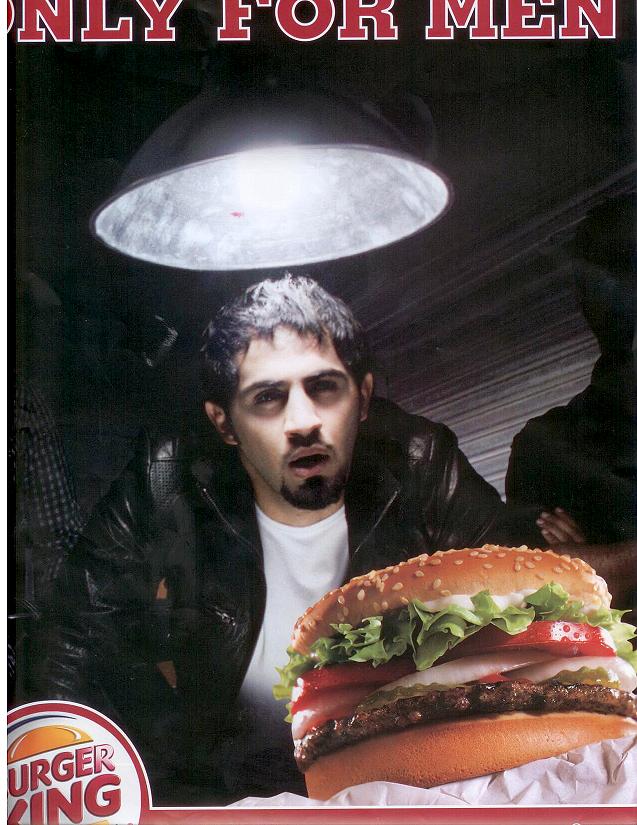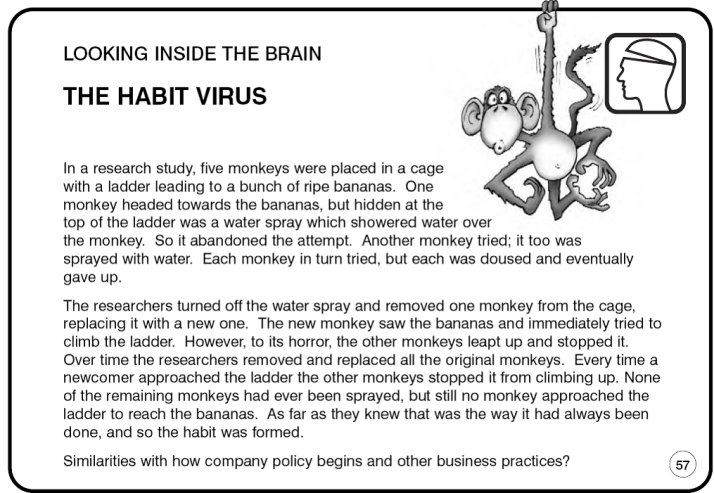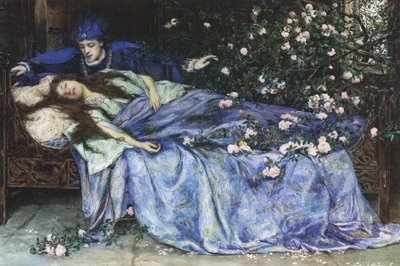When i was last in Iran, during Nowrooz, Isfahan was on my list of cities to visit, but some family emergency forced me to drag my sorry ehm, ehm, back to Kuwait. So when at around 10:00 am some day in November I heard that we are going to be off from December 5th to December 13th, I made sure that an email confirming my ticket to Tehran was in my inbox by 10:10 am 🙂 (Of course I later on found out that we were only going to be off for 3 days, but hey it was too late to cancel my flight ;p)
Now since this was my own country, I wanted it to be a bit spontaneous. I didn’t research and write up an exact iternary like I usually do when I travel. But I did need to get a hotel.
The first hotel I liked was Abbassi Hotel. I LOVED the suites. Check out these pics I got from their gallery:

Abbasi Hotel-Qajary Suite

Abbasi Hotel- Safavid Suite

Abbasi Hotel Safavid Suite
But those suites were way too big for just one person and since there were no pics of their single rooms I reckon they must be ordinary. Besides I wasn’t took keen on staying at a luxurious hotel. I wanted somewher homey, somewhere pure Persian, somewhere warm and cozy…and so I stumbled on Dibai House.
The lady who owns this place bought it—and by it I mean a worn out Safavid mansion– around 6 years ago, after moving back to Iran from Spain, and settled in Isfahan with the purpose of renovating such a place to rent out. It took her 1.5 years to even find this house. Most of house dated back to the Safavid era ~350 years ago.
When I was there I had written down loads of notes about the place, but I can’t find it now. So I guess for the time being I got to copy and paste the info from Dibai House site itself (thank God it’s very informative)
Dibai House is a traditional Persian residence that has been restored entirely and in detail. Transformed into a hotel, offers its guests the opportunity to stay in a historic mansion at the very centre of the Old City, and surrounded by a picturesque and artistic setting.
Dibai House dates from the 1670’s. Nevertheless, modern facilities have been carefully added, so that the house can boast of being able to offer a truly comfortable and altogether enjoyable accommodation.
Dibai House has ten rooms to cater for twenty guests. There are three single rooms, five twin rooms and two triple rooms. Two of the twin rooms are en-suite, whilst the other rooms share five modern bathrooms.
The house has various common areas, open to all:
- The shah neshin, or talar. This room is a feature common to all traditional Persian residences and was historically the house’s main daily hub, and where guests were received and entertained. Nowadays it is used as a big living room.
- Spacious shabestans, or basements, where the dining room is located.
- The chai khane, or tea room, with a samovar and fresh local pastry, a place to chill out and relax enjoying a cup of tea
- The magnificent hoz khane, or pool house, with intricate window and mirror works, paintings, reliefs and beautifully crafted walls.
- Two sahn, or courtyards.
Here are some pics I took over my one week stay over there:
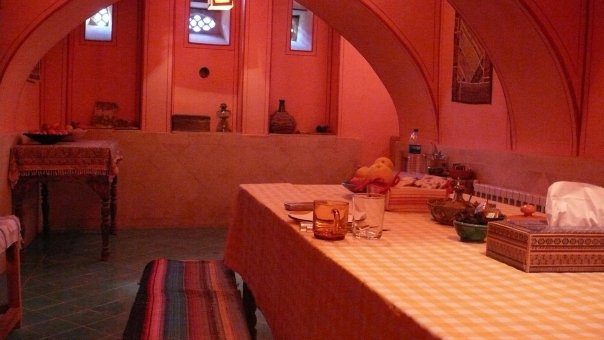
Dibaee House/Hotel in Isfahan..this is the Shabestaan where I always had my breakfast...oh God I so miss those home made jams 😦
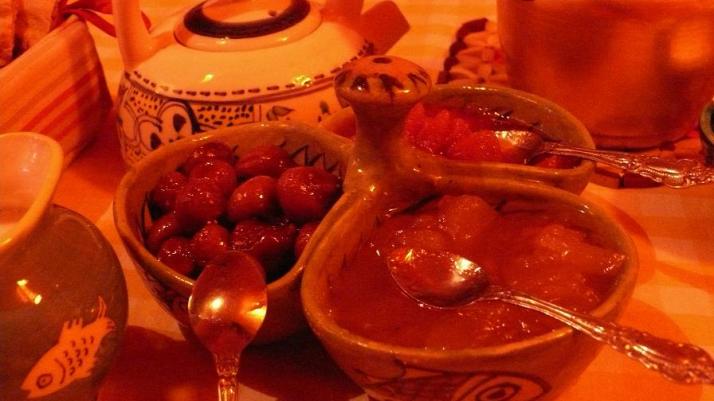
Those home made jams
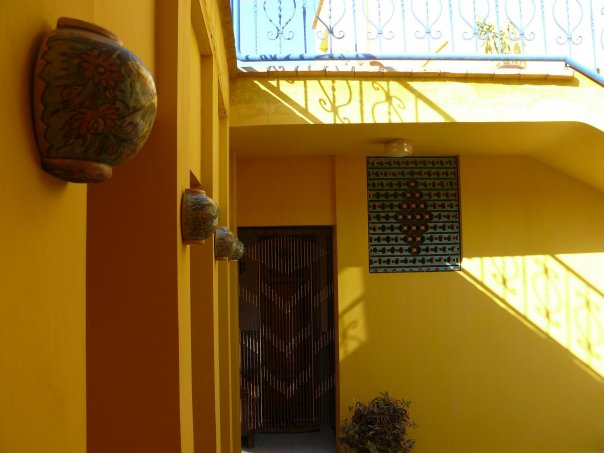
Backyard of the Dibaee House/Hotel in Isfahan
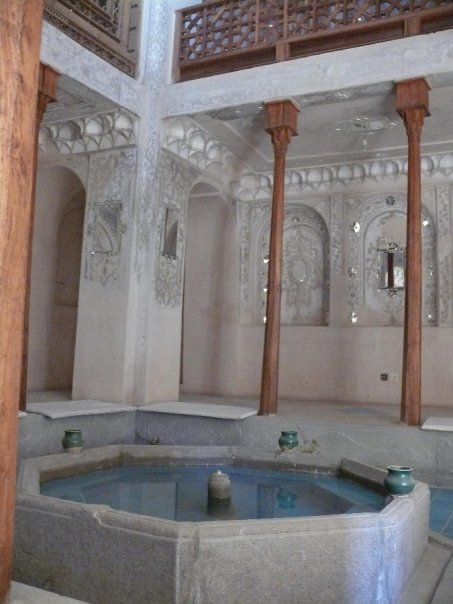
Pool Room (as in fountain not the game) of Dibai House..notice the shape of the pool..it's an octagon

Dibai House (a hotel in Isfahan)
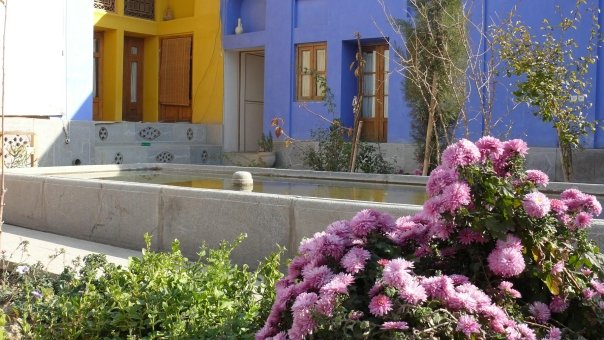
The front yard on Dibai House

The Shah Nesheen room (main living room)
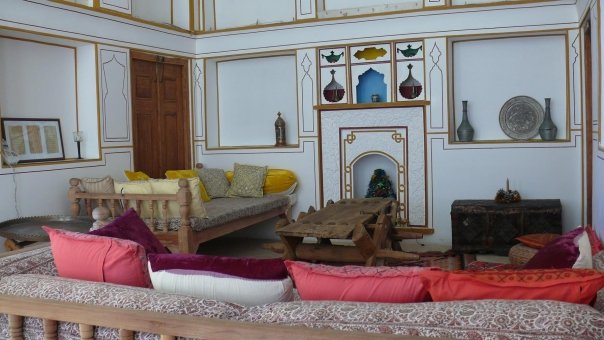
Inside the Shah Nesheen...check out that table...the daughter of the owner found it in another old mansion and turned it into a table :)...now how cool is it 😀 😀

The Shah Nesheen room
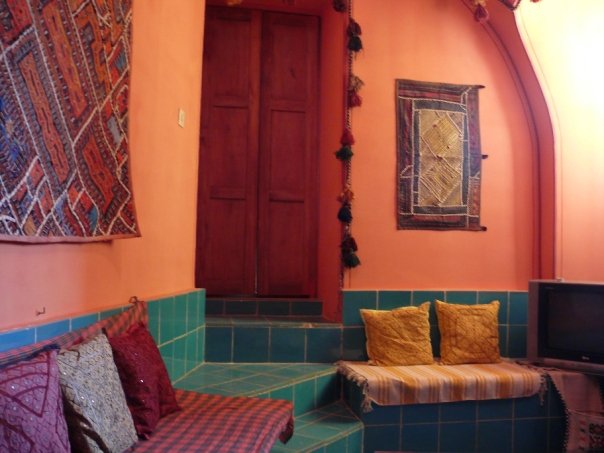
The TV Room..very cozy
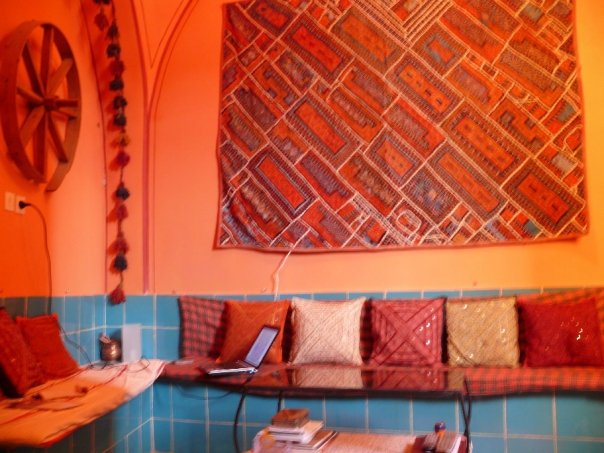
The TV Room-I miss sitting there late in the evenings with Miss Sufi (the owner) and her daughter watching Spanish programs
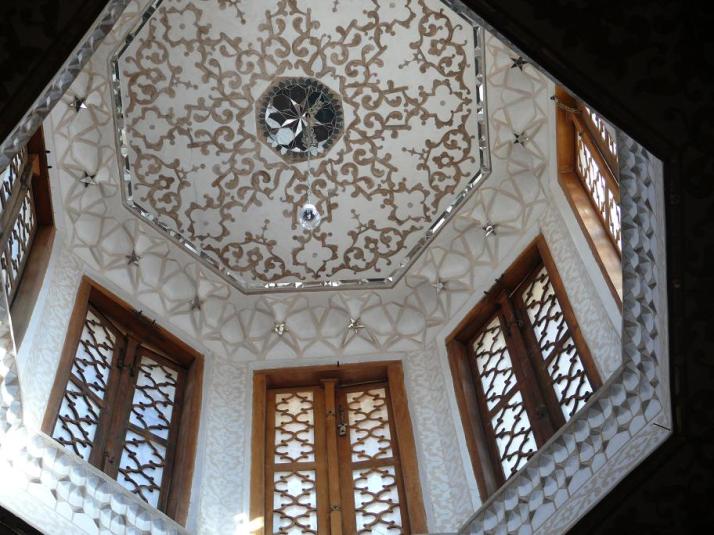
The dome ceiling of the pool room--do you notice anything similar between this, the pool/fountain below it and the entrance hall? ...they are all octagons...I was told that the number 8 was considered lucky in the Zoroastrian religion and that's why a lot of houses that date back to the Safavid era reflect the number 8 in their designs.
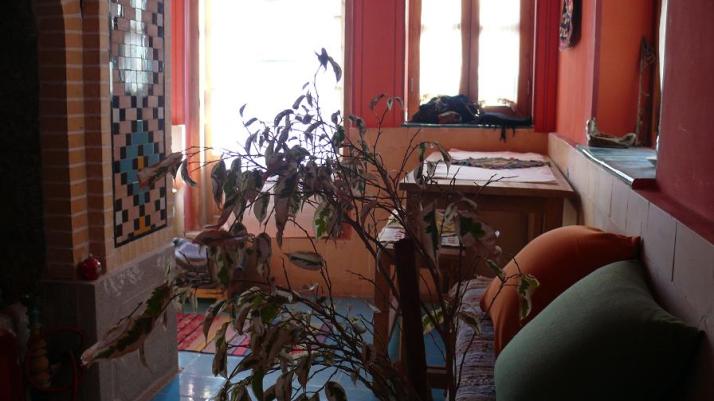
The Tea Room

Dibai House-Shah Nesheen...I was told the windows were colorful so as to repel flies away

A double room in Dibai House...those two little compartments next to the door were where they used to lit paraffin candles in the old days. It was between two rooms so both could be lit. There was an opening in the compartment so the smoke would be sucked up to the roof
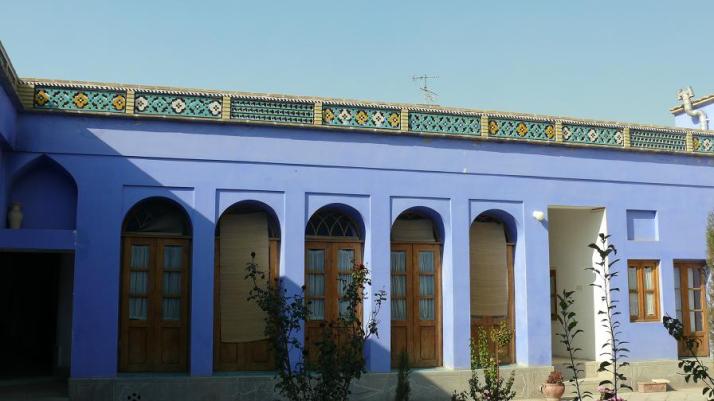
The right wall of the courtyard. This image is reflected on the left wall (see next pic)
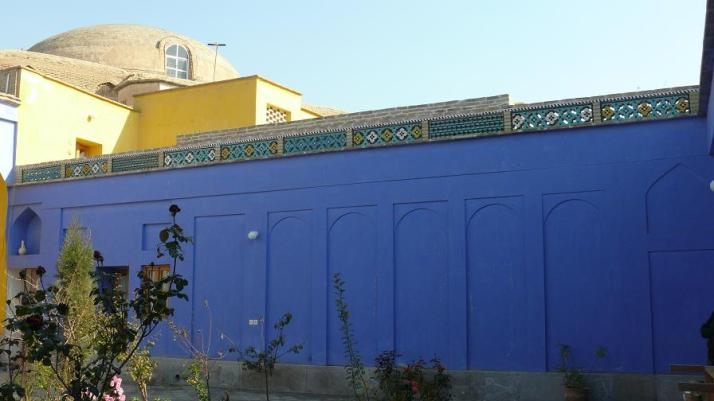
The left wall--a mirror reflection of the right wall

The courtyard of Dibai House...according to Ms.Sufi no chemical paint was used in the renovation since these houses need to 'breath'...do you see the openings on the steps over there? those were for sucking the moisture from the walls. Here's an interesting tidbit Sufi told me: The walls in those days were always built just high enough for only half the yard to be in shade

The entrance door to Dibai House (I am not sure if that's the original door but most likely it is very similar). In all old houses in Iran, there were two door separate door knockers--one for females and one for men. One could tell if the visitor was male or female based on the sound of the knock
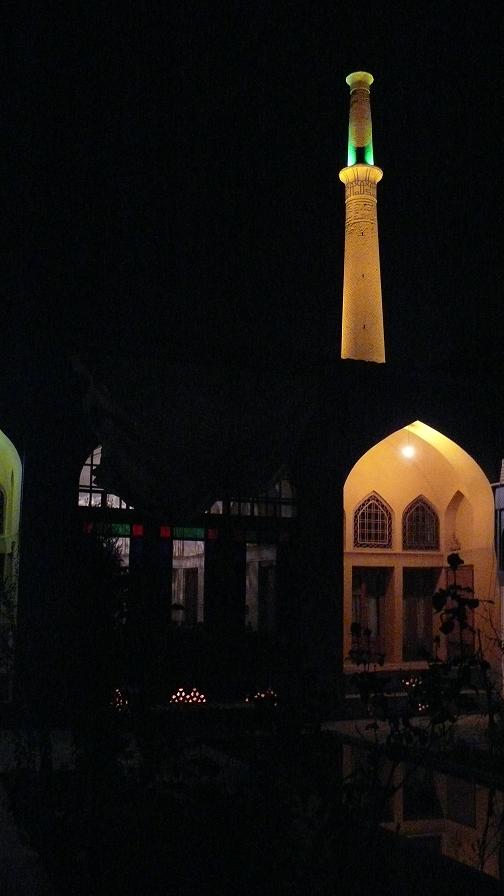
The land light house/minaret from Seljuky era ( eleventh-century-over 1000 years ago!!!) is visible from the courtyard. This lighthouse was used to guide travelers on the silk road...aaah how I miss sitting in that yard until early hours of the morning starring at the stars while listening to Haydeh
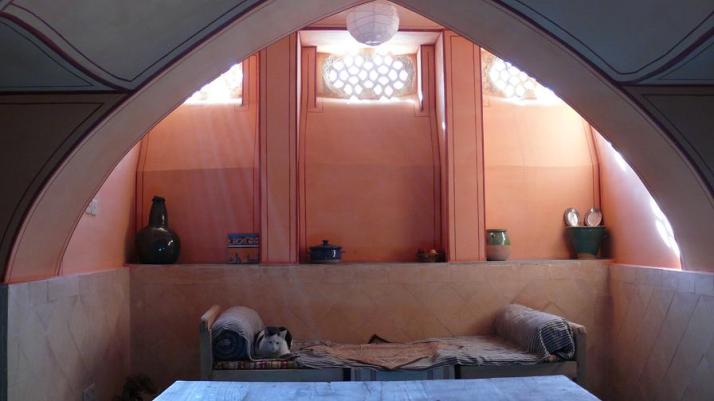
Meloo--the cat of Dibai House resting in the Shabestaan
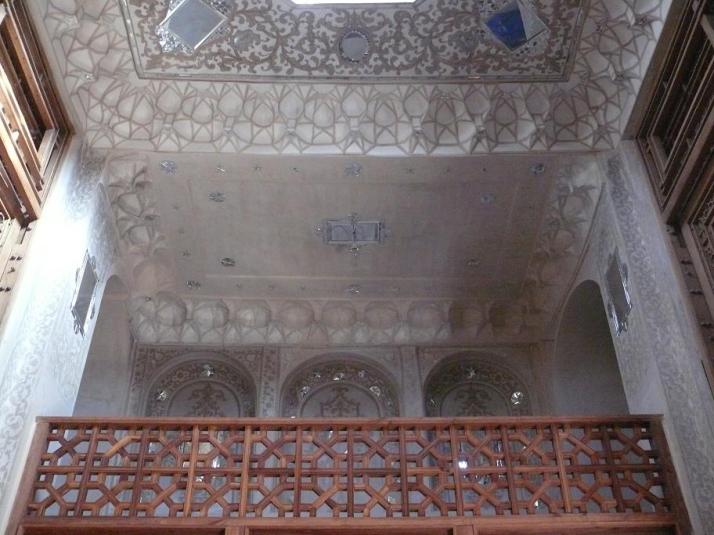
The balcony overlooking the pool. In the old days, the ladies used to sit up there and enjoy the brisk air
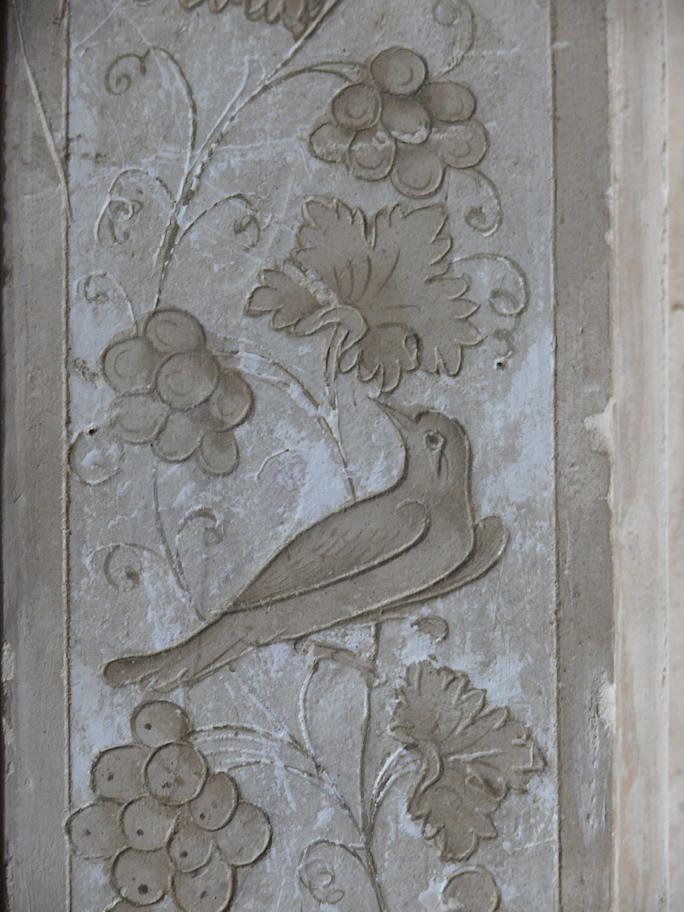
An image on one of th wall of the pool house. The pool house was made during the Qajay period. According to Ms. Sufi (the landlady) one way of distinguishing a Safavid architecture and Qajay one is: 1. Qajary traveled to Europe a lot so a lot of the Renaissance imagery is reflected in their art work. 2. The Qajaries loved shiny things, so they used a lot of mirror works. 3. The Safaivds loved simplicity and arches
Some interesting facts from Dibai House site:
An outline of the history of Dibai House
The buildings comprising today Dibai House were originally part of a much larger residential complex know as Khaneye Harandi, or Harandi House. Named after its owner Hassan Harandi, a notorious, wealthy and influential textile merchant, the house was built in the 1670s to serve as a primary residence.
Khaneye Harandi was an excellent example of traditional Persian residential architecture. The complex occupied an entire block and comprised a beautiful and elaborate hoz khane, or pool house, ample stables and an additional building that served as caravanserai. Various adjacent shops, facing Harounie’s High Street and still in use today, were also part of Khaneye Harandi.
The house had the characteristic partitioning into an interior wing, the andaruni and an exterior wing, the biruni. The andaruni, as opposed to the biruni, was the part of the house in which the private quarters were established, and specifically where the women of the house could freely move about without fear of being seen by an outsider. The only men allowed in the andaruni were the lord of the house, those related to him, like his sons, and guests allowed in under special circumstances.
This impressive palace-like dwelling was divided into independent parts in the early second half of the nineteenth century and sold off separately. And it was at that time when a distinguished army officer called Dibai acquired the andaruni, which became an independent residence and would subsequently be known as Dibai House
The premises that make up Dibai House today are precisely those who bought the army officer. Eventually neglected by his heirs, Dibai House fell into disrepair and it was in a run-down state when found by its current owner. After its purchase, the house underwent an exhaustive restoration carried out by leading experts in the recovery of historic buildings, a no easy task that lasted over four years. The work done respected the house’s original architectural layout and design, leaving the building as close a state as it was then, almost four centuries ago. Wood from Isfahan’s forests and paints and plasters of non-chemical origin, produced using traditional methods, were used throughout.
The house’s pride is undoubtedly its hoz khane, one of the best preserved of its kind in Isfahan, if not the best. Its aesthetic roof scapes with an intriguing light well, as well as the intricate window and mirror works, paintings, reliefs, and a beautifully crafted walls make it an outstanding architectural feature.
Historical note: Harunie is named after after Aaron the Upright, or Harun al-Rashid (763-809). Born near Tehran, he was the fifth and most notable Abbasid caliph. Under his reign the Abbasid empire reached its apogee. Harun fought the Eastern Roman Empire and was an avid patron of letters and of arts. He had a trilling life and held a magnificent court on which many of the stories of the ‘Thousand and One Nights’ are based. While in a journey through Iran, he became ill and died in Tus (Khorasan province). He was buried in Mashad.
Dibai House was listed among the Iran’s National Cultural Heritage Sites in 2004
